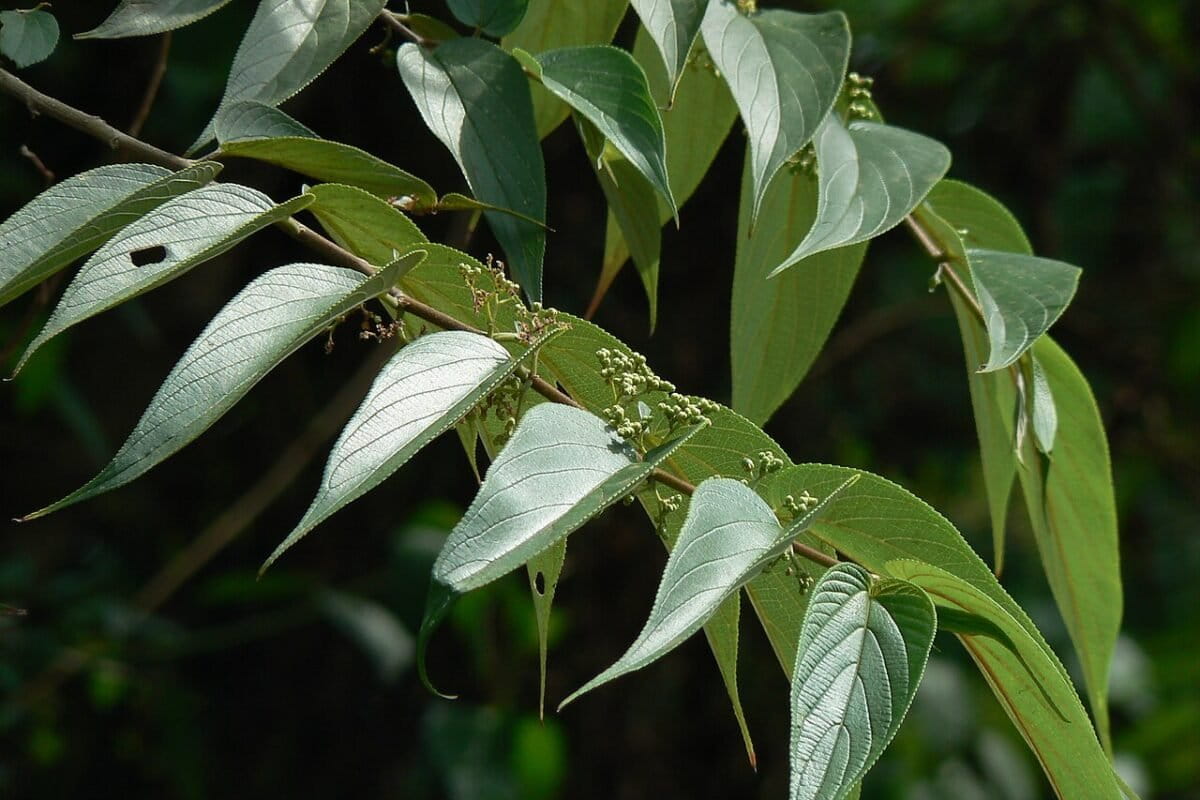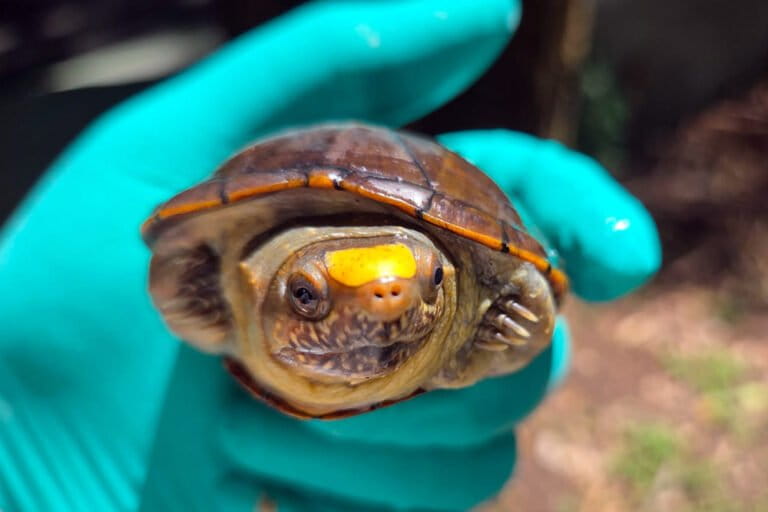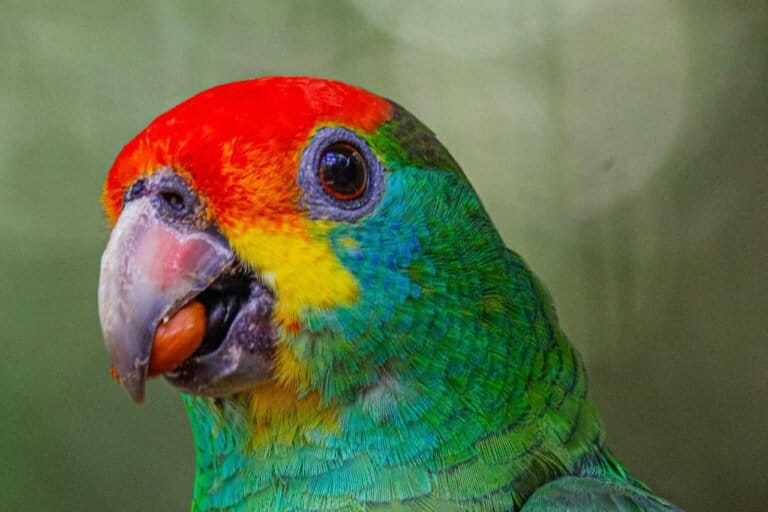- The Philippines has 11 endemic hornbill species and nine are threatened, according to the country’s red list of threatened species, which was updated this year.
- The Visayan hornbill is the latest species to be identified as critically endangered, joining the rufous-headed hornbill and the Sulu hornbill.
- While conservation programs have strengthened the protection of the rufous-headed hornbill, the population of the Sulu hornbill continues to decline, with only 27 recorded individuals in the wild.
- The Philippines is working on a national hornbill conservation action plan, which will place all hornbill species under a stricter mantle of protection.
MANILA — The last 15 years have been harsh on hornbills in the Philippines: Nine out of the 11 species in the country are threatened, with the Visayan hornbill (Penelopides panini) reaching critically endangered status, according to the environment department’s updated National List of Threatened Terrestrial Fauna of the Philippines.
“From seven hornbill species threatened in 2004, we now have nine,” Berhel Doria of the environment department’s wildlife resources division tells Mongabay. “Unlike other birds that make nests out of dried plants, hornbills make nests from hollow trees,” he says, which makes them vulnerable to illegal logging, in addition to poaching and hunting.
Of the 55 recognized hornbill species in the world, 32 are found in Asia, and 11 are endemic to the Philippines.
The Visayan hornbill is particularly threatened, with an estimated wild population of 1,200, according to figures from the IUCN and U.K.-based BirdLife International.
Endemic to the Visayas group of islands that make up the central portion of the Philippine archipelago, the hornbill was also the first to report a subspecies extinction in 2013, when the Ticao hornbill (P. p. ticaensis) disappeared completely from Ticao Island.
“Our list of threatened bird species grew,” Doria says. “As a matter of fact, birds are the biggest addition to the threatened list. None of our avian species got delisted.”

Declining population in the wild
The updated red list identifies two other hornbill species as being critically endangered hornbill: the rufous-headed hornbill (Rhabdotorrhinus waldeni), which is endemic to the islands of Panay and Negros in the Visayas, and the Sulu hornbill (Anthracoceros montani), found only on the island of Tawi-Tawi in Mindanao.
The Haribon Foundation, a local group that’s carrying out a massive reforestation project in Panay, estimates the rufous-headed hornbill population at 1,800 on the island. Gregorio dela Rosa Jr. of the Haribon Foundation says the group plans to open another office on neighboring Negros Island, where the same species is deemed “functionally extinct.”
“The islands of Panay was once a hotspot for deforestation in the ’60s to ’70s,” dela Rosa says. “But the province’s awareness on conserving the hornbills are high – the locals even have a festival where they dress up as hornbills.”
Prospects are bleaker, however, for the Sulu hornbill. With only 27 recorded individuals in the wild, according to BirdLife International, a sharp decline from the 49 estimated by the IUCN in 2017, the species’ existence heavily hinges on the security situation in Mindanao, where armed insurgents are known to target birdwatchers and avian researchers.
In a survey Haribon conducted this year in Tawi-Tawi, the species remained elusive. “We didn’t see any individual when we did our survey … and we stayed there for one month,” dela Rosa says.

National hornbill conservation plan
Two other hornbill species also saw their conservation outlook decline on the national red list. The Luzon rufous hornbill (Buceros hydrocorax), notorious for preying on the chicks of the Philippine eagle (Pithecophaga jefferyi), and the Mindanao wrinkled hornbill (Rhabdotorrhinus leucocephalus) were both classified as vulnerable in 2004 but are now considered endangered. The Mindoro hornbill (Penelopides mindorensis) is the third endangered hornbill species in the country.
Three species listed as vulnerable are the Luzon hornbill (Penelopides manillae), the Mindanao hornbill (Penelopides affinis) and the Palawan hornbill (Anthracoceros marchei).
The Samar hornbill (Penelopides samarensis) and the Southern rufous hornbill (Buceros mindanensis) remain in the least concern category, though the IUCN classifies the latter as vulnerable. Regardless, all 11 species will be covered by the Philippines’ national hornbill conservation action plan, which Doria says is already in the pipeline.
Hornbills are called “farmers of the forests” by experts Margaret Kinnaird and Tim O’Brien for their role in dispersing seeds. They’re famed for being among the noisiest birds in the forests, and are capable of flying across great distances to find fruit-bearing trees.
Forest conversion to agricultural and logging practices remain the biggest threat to hornbills, which thrive on primary or well-developed secondary forests. “Hunting, trapping and nest poaching for food, the illegal pet trade and sport are also responsible for the decline in Philippine hornbills,” says the Wild Bird Club of the Philippines, a nonprofit.
The Philippine Red List committee (PRLC) assessed almost 2,000 species of mammals, birds, reptiles, amphibians and invertebrates to update the country’s red list. The environment department has yet to publish and release the official list.
Banner image of the Visayan tarictic hornbill (Penelopides panini), the latest avian addition to the Philippines’ growing list of critically-endangered species. It can be found in the rainforests of Panay, Negros, Masbate, and Guimaras islands. Image by Steve Wilson / Wikimedia Commons
FEEDBACK: Use this form to send a message to the author of this post. If you want to post a public comment, you can do that at the bottom of the page.














